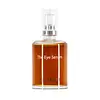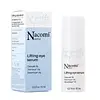What's inside
What's inside
 Key Ingredients
Key Ingredients

 Benefits
Benefits

 Concerns
Concerns

No concerns
 Ingredients Side-by-side
Ingredients Side-by-side

Pisum Sativum Extract
Skin ConditioningMorus Alba Extract
AstringentFucus Vesiculosus Extract
EmollientSus Extract
Skin ConditioningPropanediol
SolventGlycerin
HumectantGlycyrrhiza Glabra Root Extract
BleachingAesculus Hippocastanum Extract
AntioxidantHydrolyzed Rice Bran Protein
Skin ConditioningGlycine Soja Protein
EmulsifyingOxido Reductases
Skin ConditioningElastin
Skin ConditioningAlpha-Arbutin
AntioxidantUrsolic Acid
MaskingPhenoxyethanol
PreservativeCitric Acid
BufferingSorbic Acid
PreservativePisum Sativum Extract, Morus Alba Extract, Fucus Vesiculosus Extract, Sus Extract, Propanediol, Glycerin, Glycyrrhiza Glabra Root Extract, Aesculus Hippocastanum Extract, Hydrolyzed Rice Bran Protein, Glycine Soja Protein, Oxido Reductases, Elastin, Alpha-Arbutin, Ursolic Acid, Phenoxyethanol, Citric Acid, Sorbic Acid
Water
Skin ConditioningGlycerin
HumectantCoco-Caprylate/Caprate
EmollientButyrospermum Parkii Butter
Skin ConditioningC12-15 Alkyl Benzoate
AntimicrobialPassiflora Incarnata Seed Oil
Skin ProtectingTrehalose
HumectantCetearyl Alcohol
EmollientGlyceryl Stearate
EmollientCetyl Alcohol
EmollientHydrolyzed Yeast Extract
Skin ConditioningRosa Canina Seed Oil
EmollientSclerocarya Birrea Seed Oil
HumectantChenopodium Quinoa Seed Extract
Skin ConditioningStearic Acid
CleansingPotato Starch Modified
Tocopheryl Acetate
AntioxidantAlbizia Julibrissin Bark Extract
MaskingDarutoside
Skin ConditioningLecithin
EmollientTribehenin
EmollientCeramide Ng
Skin ConditioningPalmitoyl Hexapeptide-12
Skin ConditioningLactic Acid
BufferingPolyglucuronic Acid
Skin ConditioningCitric Acid
BufferingCetyl Hydroxyethylcellulose
Emulsion StabilisingDehydroacetic Acid
PreservativeSodium Lauroyl Glutamate
Sodium Benzoate
MaskingPotassium Sorbate
PreservativeBenzyl Alcohol
PerfumingWater, Glycerin, Coco-Caprylate/Caprate, Butyrospermum Parkii Butter, C12-15 Alkyl Benzoate, Passiflora Incarnata Seed Oil, Trehalose, Cetearyl Alcohol, Glyceryl Stearate, Cetyl Alcohol, Hydrolyzed Yeast Extract, Rosa Canina Seed Oil, Sclerocarya Birrea Seed Oil, Chenopodium Quinoa Seed Extract, Stearic Acid, Potato Starch Modified, Tocopheryl Acetate, Albizia Julibrissin Bark Extract, Darutoside, Lecithin, Tribehenin, Ceramide Ng, Palmitoyl Hexapeptide-12, Lactic Acid, Polyglucuronic Acid, Citric Acid, Cetyl Hydroxyethylcellulose, Dehydroacetic Acid, Sodium Lauroyl Glutamate, Sodium Benzoate, Potassium Sorbate, Benzyl Alcohol
Ingredients Explained
These ingredients are found in both products.
Ingredients higher up in an ingredient list are typically present in a larger amount.
Citric Acid is an alpha hydroxy acid (AHA) naturally found in citrus fruits like oranges, lemons, and limes.
Like other AHAs, citric acid can exfoliate skin by breaking down the bonds that hold dead skin cells together. This helps reveal smoother and brighter skin underneath.
However, this exfoliating effect only happens at high concentrations (20%) which can be hard to find in cosmetic products.
Due to this, citric acid is usually included in small amounts as a pH adjuster. This helps keep products slightly more acidic and compatible with skin's natural pH.
In skincare formulas, citric acid can:
While it can provide some skin benefits, research shows lactic acid and glycolic acid are generally more effective and less irritating exfoliants.
Most citric acid used in skincare today is made by fermenting sugars (usually from molasses). This synthetic version is identical to the natural citrus form but easier to stabilize and use in formulations.
Read more about some other popular AHA's here:
Learn more about Citric AcidGlycerin is already naturally found in your skin. It helps moisturize and protect your skin.
A study from 2016 found glycerin to be more effective as a humectant than AHAs and hyaluronic acid.
As a humectant, it helps the skin stay hydrated by pulling moisture to your skin. The low molecular weight of glycerin allows it to pull moisture into the deeper layers of your skin.
Hydrated skin improves your skin barrier; Your skin barrier helps protect against irritants and bacteria.
Glycerin has also been found to have antimicrobial and antiviral properties. Due to these properties, glycerin is often used in wound and burn treatments.
In cosmetics, glycerin is usually derived from plants such as soybean or palm. However, it can also be sourced from animals, such as tallow or animal fat.
This ingredient is organic, colorless, odorless, and non-toxic.
Glycerin is the name for this ingredient in American English. British English uses Glycerol/Glycerine.
Learn more about Glycerin